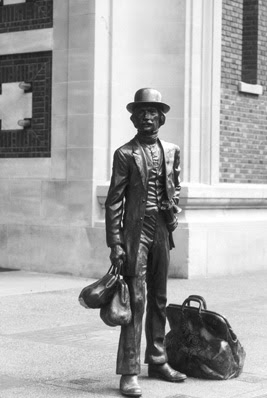
I've been posting some thoughts and tests in learning my Canon 5D camera on my 5D Blog. In a series of columns I wrote about testing the difference in the camera settings, which of them, the picture style, color/white balance and exposure metering was the most critical and so on to the least critical, and to understand the difference between shooting raw and jpeg format. Well, I'll stand behind the test for the first but not the conclusions I made at that time about the raw versus jpeg, because of my misunderstanding of raw format.
Well, due to the great folks at Photo.net I've learned the difference. I still have some arguments about which to use and disagree with those who advocate shooting raw all the time, and I'll get into that issue later in this post. But first the correction to my understanding. Without getting into the details, which you can look up ad naseum with Google, the difference is fairly simple. And you ask, "Ok, what?"
The simple explanation is raw format is the original image based on the ISO setting and the exposure setting of the shutter and aperture, and nothing more. It simply records the intensity of the light falling on each pixel and records that. It's in a sense the same as film where the pixels are recorded film image. It's why the file size is so large, 36.5 Mbytes with the 5D being a full frame sensor.
The jpeg format is the converted image based on the camera settings, in order of importance, white/color balance, picture style, and metering type. This means the white/color balance makes the most difference between settings, picture style second, but really less so if you use the standard setting, and then the metering, which can be a minor to major change in the exposure reading depending on that setting.
The jpeg is what you see from the camera, similar to film with its characteristics. Raw has the advantage of being the original image with more flexibility to edit after downloading. With raw to tif or jpg conversion programs you can set the white/color balance similar to the camera. You still need to know the light conditions of the image so you can make the adjustments, but you have the full latitude with the color temperature.
The difference between the two is that jpeg uses the camera's raw to jpeg conversion and raw uses the image editor's raw to output conversion, and that's the choice you need to make, where to convert. Raw does have the additional advantage of the full set of image tools with the original image than with the jpeg's settings which is more adjusting than editing. So which is better?
The answer is neither. I would choose by the situation. If you can get good images with jpegs with the camera's settings and don't plan or want too much additional editing or adjustment, and you need a lot of images, shoot large or fine jpeg. If you plan to do a lot with the image, especially large prints, and want the original image, then shoot raw and process it with a photo editor. But remember you won't get near the number of image per flash card, often only a third to sixth of the number of jpegs.
I wouldn't recommend shooting both in the camera. It simply wastes space on the flash cards. You can swith file format so, think through what you want, set and just shoot away. Oh, the image? It's Agfa Scala black and white transparency film. I love Scala film, but that's a whole different issue.

In light of your comments about simplicity, I have to opt for jpg. For what I do, which is quick & dirty snapshots of unanticipated moments, RAW would be too impractical. I can see it being useful for mor rigorous & deliberate work. To me, a photo is just an approximate, an impression. Regarding your comments recently on photo.net about 'geeks,' your blog has me curious as to who else out there might regard photography as more than a technical pursuit.
ReplyDeleteThanks for the comment. You given me some new thoughts. I don't have an answer to your question, but I suspect many older photographers, while embracing technology because they have to do so to do their photography today, they still focus on the results. It's the old-school photography where you look and see and image from the field to the product that's being lost in the interest to get the image into Photoshop to fix everything there. To them I say, go shoot large format, and see how far that logic works.
ReplyDelete